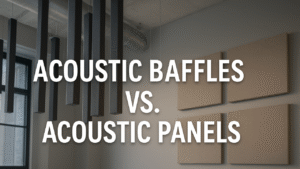Advantages of Blast Resistant Buildings for Industrial Safety
Blast Resistant Buildings have emerged as a critical solution for industrial safety in facilities handling hazardous materials, high-pressure systems, and volatile chemicals. Traditional structures often fail to withstand explosions, putting lives, equipment, and operations at severe risk. These purpose-built buildings are engineered to absorb and deflect explosive forces, ensuring that both personnel and critical assets remain protected while minimizing structural damage.
Beyond safety, Blast Resistant Buildings help industries maintain operational continuity during emergencies, reduce downtime, and comply with global safety standards. From oil and gas refineries to chemical plants, power generation units, and defense facilities, adopting blast-resistant structures has become a global benchmark for industries that prioritize safety, compliance, and efficiency.
In this article, we will explore the top 10 advantages of Blast Resistant Buildings, highlighting why they are an indispensable investment for modern industrial operations.
1. Unmatched Protection Against Explosions
The primary benefit of Blast Resistant Buildings is their ability to withstand intense pressure waves. Unlike conventional structures, they are designed to resist deformation and maintain structural integrity during high-intensity blast events.
Walls, doors, and joints are made from reinforced steel and composite materials that absorb and dissipate blast energy efficiently. This ensures the interior remains safe, protecting both personnel and valuable assets.
In high-risk industrial zones, this protection can mean the difference between a minor incident and a major disaster.
2. Safety for People and Critical Equipment
Blast Proof Buildings provide a secure environment for workers, even in hazardous areas. They act as safe zones against explosions, heat, and flying debris.
Additionally, these buildings safeguard critical control systems, communication units, and machinery. By protecting both personnel and equipment, industries ensure safety and business continuity simultaneously.
3. Compliance with Global Safety Standards
Safety regulations are mandatory. Blast Resistant Buildings are designed and tested according to international standards such as API RP 752, ASCE, and NFPA.
Installing these structures helps industries demonstrate compliance, reduce legal liability, and build trust with regulators and stakeholders. Compliance may also lead to lower insurance premiums and fewer operational interruptions.
4. High Durability and Long-Term Performance
Durability is key. Reinforced steel panels, concrete composites, and high-strength alloys make these buildings resistant to corrosion, weather, and mechanical stress.
They can withstand extreme conditions, from heat and rain to seismic vibrations. Though the initial investment may be higher, long-term benefits include lower maintenance costs and extended structural life.
5. Quick Installation and Flexibility
Blast Proof Modular Buildings are prefabricated for fast on-site assembly. Prefabrication ensures precise manufacturing and consistent quality, allowing rapid deployment.
Modular units can also be relocated or expanded, offering flexibility for changing operational needs. This is especially valuable for temporary setups or growing facilities.
6. Cost-Effectiveness Over Time
Though the upfront cost may seem high, Blast Resistant Buildings are cost-effective in the long run.
Their low maintenance, minimal downtime after incidents, and long lifespan reduce operational costs. Protecting personnel and equipment also lowers potential financial losses from accidents. Additionally, safety compliance can reduce insurance premiums.
7. Minimal Downtime After Explosions
Downtime after an explosion can be costly. Conventional buildings often require extensive repairs, but Blast Resistant Buildings are designed to remain operational after an incident.
Their robust structure allows businesses to resume operations quickly, preserving productivity and profitability even after a blast.
8. Enhances Worker Confidence and Productivity
Safety directly impacts employee morale. Workers feel secure in a Blast Proof Building, reducing stress and increasing focus.
This leads to higher productivity, loyalty, and overall workplace satisfaction. Investing in worker safety also sends a strong message that employees are a company’s top priority.
9. Customization for Industry Needs
Every industry has unique risks. Blast Resistant Buildings can be customized to meet specific requirements, including wall thickness, ventilation, fireproof interiors, and HVAC systems.
Internal layouts can include workstations, control panels, laboratories, or rest areas—all designed to maximize safety without compromising efficiency.
10. Environmentally Sustainable and Energy Efficient
Modern Blast Proof Buildings combine safety with eco-friendliness. They use recyclable materials, energy-efficient insulation, and sustainable construction techniques.
Prefabrication reduces waste, and high-grade insulation minimizes energy consumption for heating and cooling. Industries can achieve safety goals while supporting sustainability initiatives.
Integration in Modern Industries
Today, Blast Resistant Buildings are not just shelters—they are functional spaces that blend safety with design flexibility. They serve as control rooms, laboratories, storage facilities, or administrative offices without compromising aesthetics or efficiency.
This integration demonstrates that safety and functionality can coexist seamlessly in modern industrial architecture.
The Engineering Behind Blast Resistance
These buildings are carefully engineered to control, absorb, and deflect explosive energy. Key elements include:
- Pressure Analysis: Calculating potential overpressure based on risks.
- Material Selection: Using high-strength steel, concrete, and composites for optimal durability.
- Structural Reinforcement: Preventing collapse while allowing controlled deformation.
- Energy Dissipation: Directing blast energy along controlled paths to minimize damage.
- Anchoring Systems: Securing foundations to prevent sliding or overturning.
This meticulous design ensures safety without compromising usability.
Applications Across Industries
Blast Resistant Buildings are versatile and widely used in:
- Oil & Gas: Control rooms, shelters, and operating cabins.
- Chemical Plants: Protection for volatile materials and equipment.
- Defense & Military: Command centers, munitions storage, and training facilities.
- Power Generation: Safeguarding turbines and monitoring units.
- Pharmaceuticals & Manufacturing: Safe production and research environments.
Each application benefits from enhanced safety, flexibility, and operational efficiency.
The Growing Global Adoption
Industries are increasingly adopting Blast Proof Modular Buildings as strategic investments. They enhance worker safety, reduce downtime, and support sustainable practices.
With technological advancements, modular systems are becoming more efficient, customizable, and aesthetically refined, encouraging wider adoption across industrial and defense sectors.
Future of Industrial Safety
The next generation of Blast Resistant Buildings will integrate smart sensors, IoT monitoring, and predictive analytics.
This will improve structural health assessment, optimize maintenance schedules, and enhance operational efficiency. Safety will evolve hand in hand with technology, setting new global benchmarks for industrial resilience.
Ecotone Systems – Leading the Way
Ecotone Systems delivers high-performance Blast Resistant Buildings tailored to diverse industrial needs. Combining durability, comfort, and global safety compliance, their solutions redefine industrial safety.
Their Blast Proof Modular Buildings protect personnel and assets without compromising functionality, demonstrating innovation and commitment to workplace safety.
Ecotone Systems’ Additional Acoustic Solutions
Beyond Blast Resistant Buildings, Ecotone Systems offers a range of advanced acoustic solutions that enhance industrial safety, comfort, and operational efficiency. Their expertise extends to:
- Acoustic Louvers
Designed to reduce noise transmission while maintaining airflow, acoustic louvers are ideal for ventilated industrial spaces. They minimize environmental noise, protect sensitive equipment, and ensure compliance with occupational health standards. - Acoustic Enclosures
These enclosures provide a controlled acoustic environment for machinery, generators, or HVAC systems. By isolating sound sources, they reduce workplace noise, enhance safety, and improve worker productivity in industrial settings. - Acoustic Doors & Anechoic Chambers
Ecotone’s specially engineered acoustic doors and anechoic chambers offer precise sound control for research, testing, or sensitive operational areas. Anechoic chambers provide near-total sound absorption, creating an ideal environment for acoustic testing and noise-sensitive processes.
By combining blast-resistant structures with advanced acoustic solutions, Ecotone Systems delivers comprehensive safety, operational efficiency, and comfort for modern industrial facilities. These services complement their core expertise, making them a one-stop solution for industries that prioritize both safety and environmental control.
Conclusion
Blast Resistant Buildings are more than structures—they are an investment in safety, productivity, and sustainability.
From unmatched protection and durability to cost efficiency and flexibility, their advantages make them essential for industries handling explosive or high-pressure materials.
Leaders like Ecotone Systems continue to set benchmarks in industrial safety, ensuring that modern operations remain secure, resilient, and future-ready.





